
Text by RUSSTUM PELIMA
Photos by COCOY SEXCION
MALAPATAN, Sarangani (March 6, 2007) – There is more to the mystique that Sarangani Bay beholds.
There's the tanguigue, the most sought-after fish in the town market here.
Tanguigue, a fine table fish with succulent white meat, is best for sugba (grilling), soup and sashimi.
Anglers love the fun of catching it because it fights long runs near the surface water.
But for Tito "Teteng" Ortizona, there is more to fishing tanguigue in Sarangani Bay. It is for a living and keeping a traditional fishing method he learned at 12 years old.
Ortizona, 41, is a tanguige hunter who uses a custom-made speargun. It has a two-meter long stainless steel arrow latched to rubber strips.
"I usually start the day at 5am while it's still dark," Ortizona said.
He sails five kilometers from the shores of barangay Sto. Nino in a motorized banca .
"By the time I reach the payao my target is already visible as I wait for tanguigue to surface," he said.
Ortizona uses a decoy – a wooden tanguigue-shaped lure – that sinks just below the surface like the real thing.
Ortizona said this attracts the fish and as the tanguigue approaches, he drops surreptitiously into the water.
He shoots the fish as it glides near the decoy.
When the arrow hits, the fish makes its quick escape forcefully. But Ortizona was already slowly pulling the nylon string hooked at the arrow's end.
Ortizona's grateful smile met us at the beach as he was passing by with two tanguigues.
It was a good catch, he said. By 11 am. that day, he had a 6-kg. and a 4.5-kg. tanguigues . He stops fishing when winds get strong by noon.
He supplies the tanguigue market in Malapatan, 30 km. east of General Santos City . Only a few men know how to fish tanguigue.
At the shore, middlemen buy the fish P100 per kilo. It costs P140 in the market.
"I've caught one 17-kilo tanguigue before . My most was a total of 26 kilos," he said.
Tanguigue is not one of the top most dominant fishes in the bay, meaning it is rarely fished.
The other common names of tanguigue or Narrow–barred Spanish Mackerel ( Scomberomorus commerson) are Tinggiri, Spaniard, Kingfish, King Mackerel, Konge Makrel, and Kungs Makrill.
Tanguigue is not commonly found in other markets other than Malapatan.
"I only fish at a payao area just like what we were told in a barangay meeting. I do not fish near coral reefs," Ortizona said of his traditional way of fishing.
A payao is a moored floating raft commonly used by fishers to attract fish.
According to a multi-agency study spearheaded by the provincial government, the offshore waters of Sarangani province belong within the migratory path of tunas, other pelagic fish species, and demersal fish species.
"Present in this area are skip jacks, flying fish, moonfish, snappers, triggerfish, mackerels, cuttlefish, barracudas, big eyes, cardinal fish, goatfish, rabbitfish, sardines, scads, slipmouths, sailfish, anchovies, batfish, fusiliers, garfish, groupers, parrotfish, sawfish, stingrays, squids, sweetlips, sharks, surgeonfish, and emperors," the study said.
Sarangani Bay is one of the few areas in the Philippines included in the national protected areas system.
By Presidential Proclamation, Sarangani Bay and portions of the municipal waters of Maitum, Kiamba and Maasim were also declared a protected seascape to protect and conserve the coastal and marine resources within the area.
Sarangani Province, established in 1992 by then Rep. James Chiongbian, was named after Sarangani Bay.
The bay was believed to have been named also from Saranganing, a Sangil from Indonesia who traded with the Sultanate of Buayan (now General Santos City).
Sarangani Bay hosts rich marine wildlife and its mystery lingers due to various versions of its origin.
One version was about rivals for a princess - Saramanggi and Marama – who had fought to get the bigger fish to win the princess' hand.
But Saramanggi was treacherously stabbed by Marama with a pointed bamboo (bangkaw). Saramanggi's blood surged over the sea and a rock began to grow from where he died.
"These are now called the Sarangani Island and Sarangani Bay in honor of the noble man," said Elias Colano, 105 years old and the oldest living person in Balut Island (Davao del Sur).
Another legend refers to Sarangani and Balut as brothers.
Balut died in the island but Sarangani, a wanderer who sailed to other places for barter trade, died in some place unknown. And so the bay was named after him. (SARANGANI INFORMATION OFFICE)
Photos by COCOY SEXCION
MALAPATAN, Sarangani (March 6, 2007) – There is more to the mystique that Sarangani Bay beholds.
There's the tanguigue, the most sought-after fish in the town market here.
Tanguigue, a fine table fish with succulent white meat, is best for sugba (grilling), soup and sashimi.
Anglers love the fun of catching it because it fights long runs near the surface water.
But for Tito "Teteng" Ortizona, there is more to fishing tanguigue in Sarangani Bay. It is for a living and keeping a traditional fishing method he learned at 12 years old.
Ortizona, 41, is a tanguige hunter who uses a custom-made speargun. It has a two-meter long stainless steel arrow latched to rubber strips.
"I usually start the day at 5am while it's still dark," Ortizona said.
He sails five kilometers from the shores of barangay Sto. Nino in a motorized banca .
"By the time I reach the payao my target is already visible as I wait for tanguigue to surface," he said.
Ortizona uses a decoy – a wooden tanguigue-shaped lure – that sinks just below the surface like the real thing.
Ortizona said this attracts the fish and as the tanguigue approaches, he drops surreptitiously into the water.
He shoots the fish as it glides near the decoy.
When the arrow hits, the fish makes its quick escape forcefully. But Ortizona was already slowly pulling the nylon string hooked at the arrow's end.
Ortizona's grateful smile met us at the beach as he was passing by with two tanguigues.
It was a good catch, he said. By 11 am. that day, he had a 6-kg. and a 4.5-kg. tanguigues . He stops fishing when winds get strong by noon.
He supplies the tanguigue market in Malapatan, 30 km. east of General Santos City . Only a few men know how to fish tanguigue.
At the shore, middlemen buy the fish P100 per kilo. It costs P140 in the market.
"I've caught one 17-kilo tanguigue before . My most was a total of 26 kilos," he said.
Tanguigue is not one of the top most dominant fishes in the bay, meaning it is rarely fished.
The other common names of tanguigue or Narrow–barred Spanish Mackerel ( Scomberomorus commerson) are Tinggiri, Spaniard, Kingfish, King Mackerel, Konge Makrel, and Kungs Makrill.
Tanguigue is not commonly found in other markets other than Malapatan.
"I only fish at a payao area just like what we were told in a barangay meeting. I do not fish near coral reefs," Ortizona said of his traditional way of fishing.
A payao is a moored floating raft commonly used by fishers to attract fish.
According to a multi-agency study spearheaded by the provincial government, the offshore waters of Sarangani province belong within the migratory path of tunas, other pelagic fish species, and demersal fish species.
"Present in this area are skip jacks, flying fish, moonfish, snappers, triggerfish, mackerels, cuttlefish, barracudas, big eyes, cardinal fish, goatfish, rabbitfish, sardines, scads, slipmouths, sailfish, anchovies, batfish, fusiliers, garfish, groupers, parrotfish, sawfish, stingrays, squids, sweetlips, sharks, surgeonfish, and emperors," the study said.
Sarangani Bay is one of the few areas in the Philippines included in the national protected areas system.
By Presidential Proclamation, Sarangani Bay and portions of the municipal waters of Maitum, Kiamba and Maasim were also declared a protected seascape to protect and conserve the coastal and marine resources within the area.
Sarangani Province, established in 1992 by then Rep. James Chiongbian, was named after Sarangani Bay.
The bay was believed to have been named also from Saranganing, a Sangil from Indonesia who traded with the Sultanate of Buayan (now General Santos City).
Sarangani Bay hosts rich marine wildlife and its mystery lingers due to various versions of its origin.
One version was about rivals for a princess - Saramanggi and Marama – who had fought to get the bigger fish to win the princess' hand.
But Saramanggi was treacherously stabbed by Marama with a pointed bamboo (bangkaw). Saramanggi's blood surged over the sea and a rock began to grow from where he died.
"These are now called the Sarangani Island and Sarangani Bay in honor of the noble man," said Elias Colano, 105 years old and the oldest living person in Balut Island (Davao del Sur).
Another legend refers to Sarangani and Balut as brothers.
Balut died in the island but Sarangani, a wanderer who sailed to other places for barter trade, died in some place unknown. And so the bay was named after him. (SARANGANI INFORMATION OFFICE)
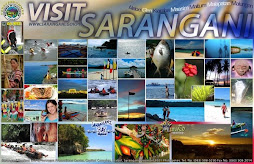
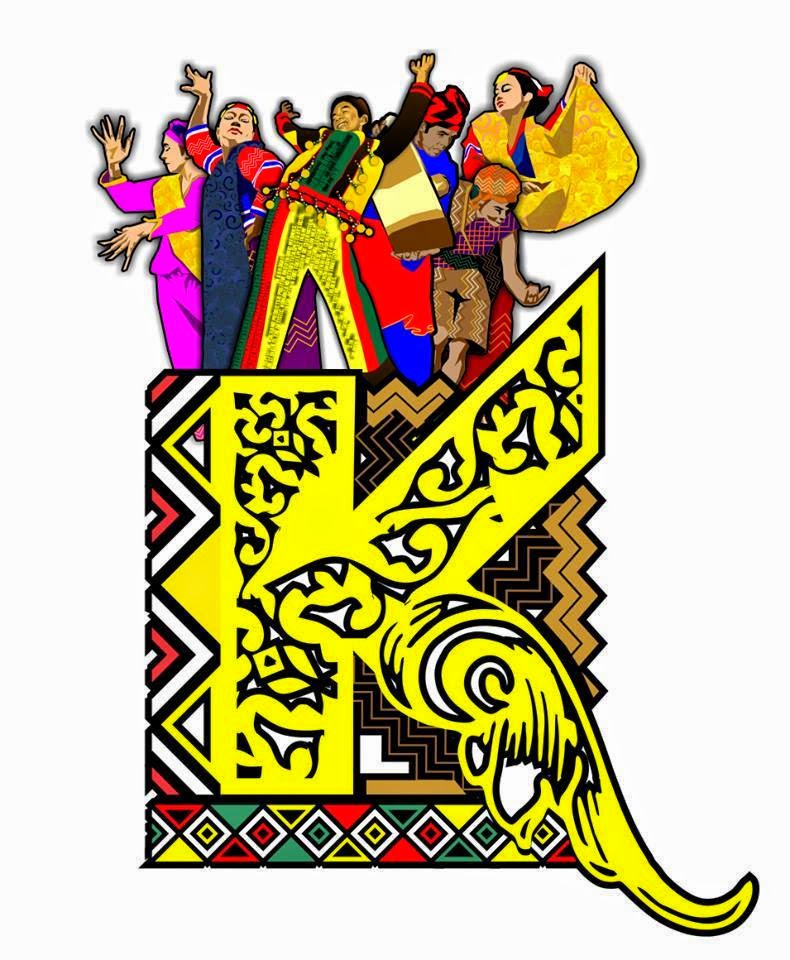

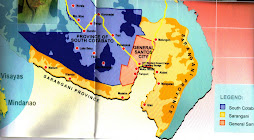

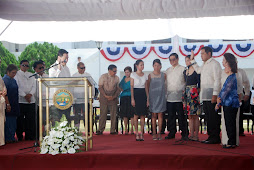
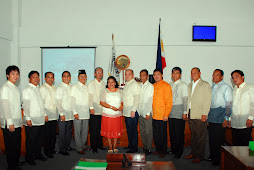


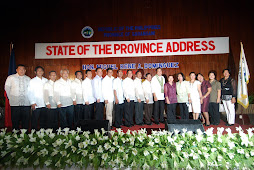
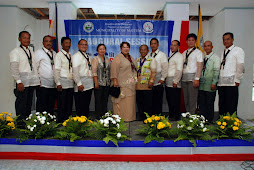







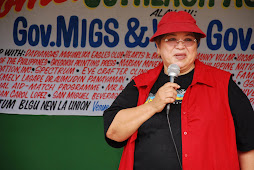
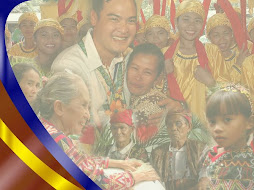






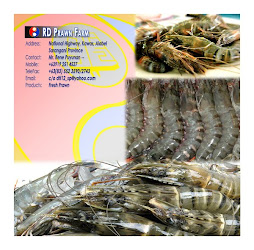
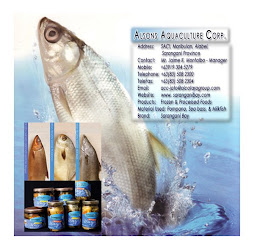
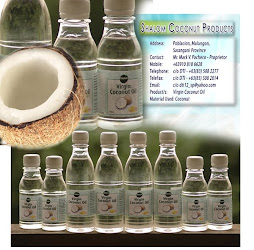




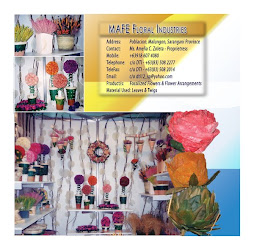

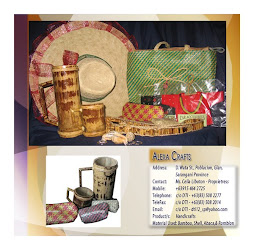
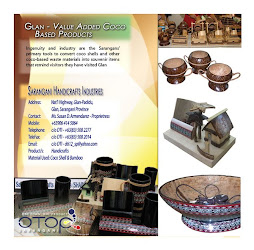
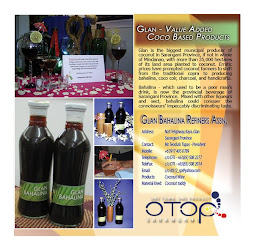
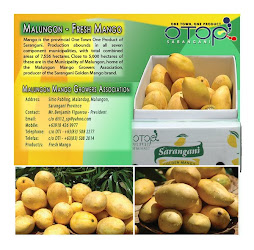
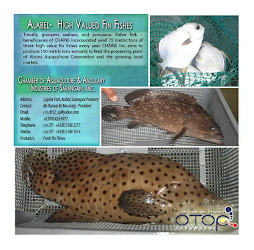
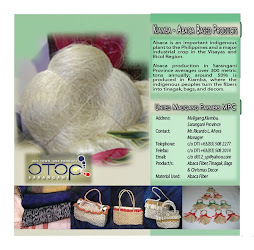

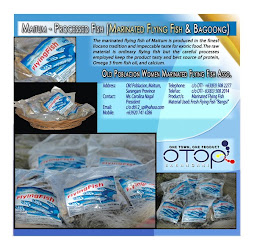
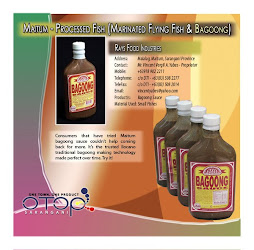

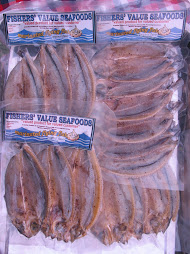

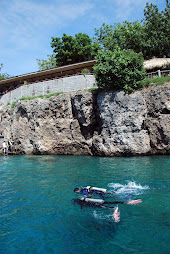
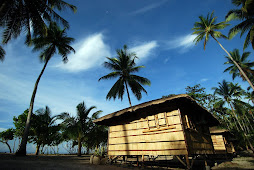



No comments:
Post a Comment